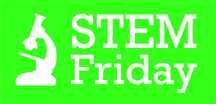Chicago Review Press has done it again with their new middle grade/YA biography collection, Animal Allies: 15 Amazing Women in Wildlife Research by Elizabeth Pagel-Hogan .
What a fantastic idea to gather stories of women all with a common love for animals!
Elizabeth Pagel-Hogan has sorted the animals into five categories: birds, arthropods, sea creatures, reptiles and amphibians, and mammals. Within each category, she has found three amazing female scientists who study those types of animals For example, Corina Newsome is saving seaside sparrows while Michelle LaRue uses satellites to study Antarctic birds. Lizzy Lowe takes on what many fear in researching spiders, and Erin Ashe lives out the dream of many studying dolphins and whales. Kristen Hecht chases the elusive hellbender amphibian while Enikö Kubinyi uses robots to get information on wolf pups.
As an entomologist, I went straight to the arthropod section. The first biography is of Dr. Corrie Moreau, who studies ants. She is currently working at Cornell University, where she is the curator of the insect collection. Corrie Moreau is passionate about ants, which comes across clearly in the text. We learn about her childhood, her education, about different aspects of the ants she studies (dracula ants!), and some of the pitfalls she encountered.
I love that Elizabeth Pagel-Hogan has included multi-sensory information, which pulls the reader right in. For example, we learn that Dr. Moreau can smell army ants and how Jasmin Graham feels standing out in the rain on a boat (headache and vertigo). Those are details you can’t get in an online search of a topic.
As for reading level, the suggested age is 12+, but mature middle graders will probably enjoy it as well.
Animal Allies is a must have collection for young readers who are interested in careers studying animals. It is also a wonderful choice for those interested in STEM, as well as nature lovers. Investigate a copy today!
Related:
Research more about the women who inspire you.
For example, the Bug Chicks –who are featured in Animal Allies — have a fun and educational series about insects on Vimeo.
You can get a feel for their somewhat offbeat approach in this video:
Then share what you find out with others!
Check our growing list of children’s books about women scientists at Science Books for Kids.
Reading age : 12 years and up
Publisher : Chicago Review Press (May 17, 2022)
Hardcover : 224 pages
ISBN-10 : 1641606223
ISBN-13 : 978-1641606226
Disclosure: This book was provided as an e-ARC by the publisher. Also, I am an affiliate with Amazon so I can provide you with cover images and links to more information about books and products. As you probably are aware, if you click through the highlighted title link and purchase a product, I will receive a very small commission, at no extra cost to you. Any proceeds help defray the costs of hosting and maintaining this website.

Come visit the STEM Friday blog each week to find more great Science, Technology, Engineering and Math books.








